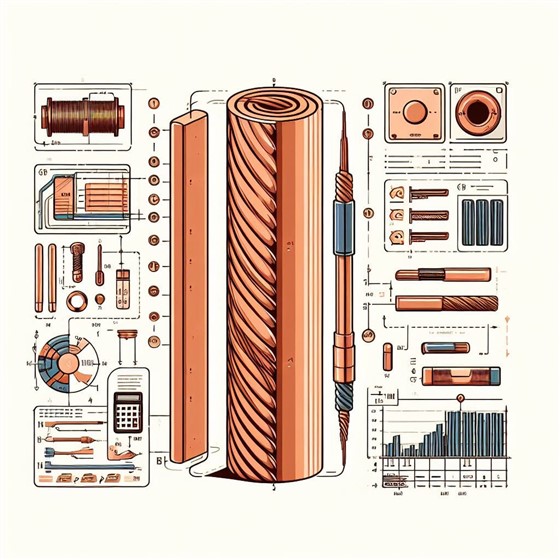Copper Wire or Copper Busbar? What is the Difference?
Busbar and Wires are both made of copper and is used in electrical systems to conduct electricity. However they have different purpose and is used in different situations. Let’s explore more in depth
What is Copper Wire?
Copper wires are usually cylindrical or round cross-sectional shape of long copper strands grouped together to form copper wires. Copper wire comes in various sizes and forms, such as Single Core Wire, Flexible Wire, Rubber Cable, Armored Cable, LSF Cable and more. Each of these type of cables is suited for different requirements and site conditions. Wires and Cables are generally used for moderate currents in residential and commercial buildings. Our homes and the electrical gadgets we use every day are powered by electrical currents carried by copper wires. Due to copper's high conductivity, which enhances its performance, copper wire is the chosen conductor for many electrical applications. Individual electrical appliances, outlets, switches, and lighting fixtures are connected to the electrical supply through wires. Within a circuit, they transfer electrical current from one location to another.
What is Busbar?
Busbar are generally made of Copper and Aluminum, both being good electrical conductor. Busbar as the name suggests are rectangular bar shaped and is available in various sizes. Busbar are used to connect several electrical parts of a system or to distribute electricity from a single source to many loads. Being made of solid pure copper, they are used primarily for electrical distribution boards, switchgear panels and power sub-stations for high-current applications.
Advantages of Copper Busbar
Compact and Robust then Wires and Cables: Busbars are more costly than wiring harnesses, but they will endure longer and need to be replaced less frequently over time.
Efficient Power Distribution: A lot of firms in the twenty-first century are focused on energy efficiency, and using busbar systems can help cut down on energy use. This is due to the systems' inherent adaptability to the integration of renewable energy, which is a crucial consideration given the rapidly evolving energy landscape.
Copper busbars are great conductors of Electricity: Due to free-moving electrons, copper, which is well-known for being conductive, is the ideal and frequently most used material for busbars, which must be able to carry electricity as easily as possible. Additionally, copper is a very durable material that has a high threshold for heat-related damage, extending the busbar's lifespan.
Copper busbars can be easily customized: There are additional mechanical design alternatives when busbars are used. Because of their extreme versatility, they are used in factories, hospitals, schools, and other establishments. Busbars are useful when there is a need for an alternate electrical distribution system or when there is a space restriction. Busbars are a great choice for usage on electrical substations or switchyards because of their exceptional strength and resilience, which allows them to survive harsh weather conditions.
Cost effective for long haul: Busbars rarely need to be replaced, even though installation is frequently expensive, particularly when creating a fully new system. Because of the units' freedom, even in situations where new power points are needed, there is no need for costly construction and building expenses, which can be time-consuming and complicated in and of themselves.
DEWA Standards for Copper Busbar in Switchgear Panels
| S.No | Rated Primary Current | Busbar Size |
|---|---|---|
| 1. | 160 A | 200A | 300A | 20 mm x 10 mm |
| 2. | 400A | 30 mm x 10 mm |
| 3. | 600A | 800A | 50 mm x 10 mm OR 2 x 30 mm x 10 mm |
| 4. | 1200A | 1600A | 2 x 60 mm x 10 mm |
| 5. | 2400A | 2 x 80 mm x 10 mm |
For More Answers Visit -> https://www.murjangroup.com/faq


